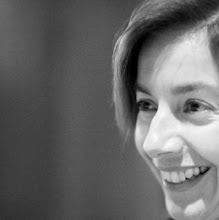I remember the first time I was introduced to loving kindness, during a weeklong retreat with
Jack Kornfield at Joshua Tree. That was many years ago . . . Back then, Jack's sweet words were met with a categorical refusal on my part, and a string of dismissive thoughts:
Don't ask me to be kind.
This is not how I feel.
This is stupid.
Fast forward fifteen years later. Loving kindness has become an integral part of my daily life. A practice I routinely call upon when the emotions get to be too much, or when my heart aches for another person.
Feeling fear, I relax into the arms of loving kindness. May I be at peace, may I be at ease, may I be well, may I be happy, may I be free from fear . . .
Feeling anger, I whisper those same words in the privacy of my mind and heart. May I have compassion for myself. May I suffuse that anger inside with love. may I free myself from it.
Feeling worry, I calm myself down, and bring myself back to the present moment, gently. May I be free of worry, may I be at peace.
Feeling grief, I soothe myself. May I be at peace, may I be at ease. May all beings be at peace.
Feeling the anguish of loved ones or people I hardly know even, I write them lovingly kind words. A quick email, a tweet, . . . or a private thought. May you be free from suffering, may you be at peace, may you be at ease.
Same with those who are difficult, and cause me to pause. May you be free from suffering, may you find peace, my heart is with you.
Loving kindness has become my secret weapon of choice, for all the times when life gets a bit rough. Why such a change of heart? What caused me to give in? I offer the following explanation to those of you doubting still the power of loving kindness.
Practicing loving kindness, does not mean feeling love at the exclusion of any other emotions. Rather it means calling upon loving kindness to enrobe all or the emotions inhabiting us in the present moment, many of which can be all but loving . . . It took a while to get this.
One needs not be able to feel loving kindness when reciting the words at first. Actually, it triggers often quite the opposite. As stated by Jack Kornfield, in The Wise Heart, 'Initially, it can feel difficult to offer love to ourself: for many it can trigger feelings of shame and unworthiness . . . After many repetitions, strong love for oneself can be established.'
It may take reaching the bottom to have one's heart finally open to the practice of loving kindness. For me, it was experiencing states of overwhelming fear. When there is nothing left to do, why not give loving kindness a chance?
There is also good
scientific evidence for why loving kindness works. Our emotions are shaped by our thoughts. If we retrain ourselves to substitute lovingly kind thoughts for our usual messages of self-hatred, over time, it is to be expected that our overall well-being will increase.
Loving kindness. So simple. Yet incredibly powerful.
May you be well, may you be happy, may you be at peace, may you be at ease, may you be healthy. :)



















